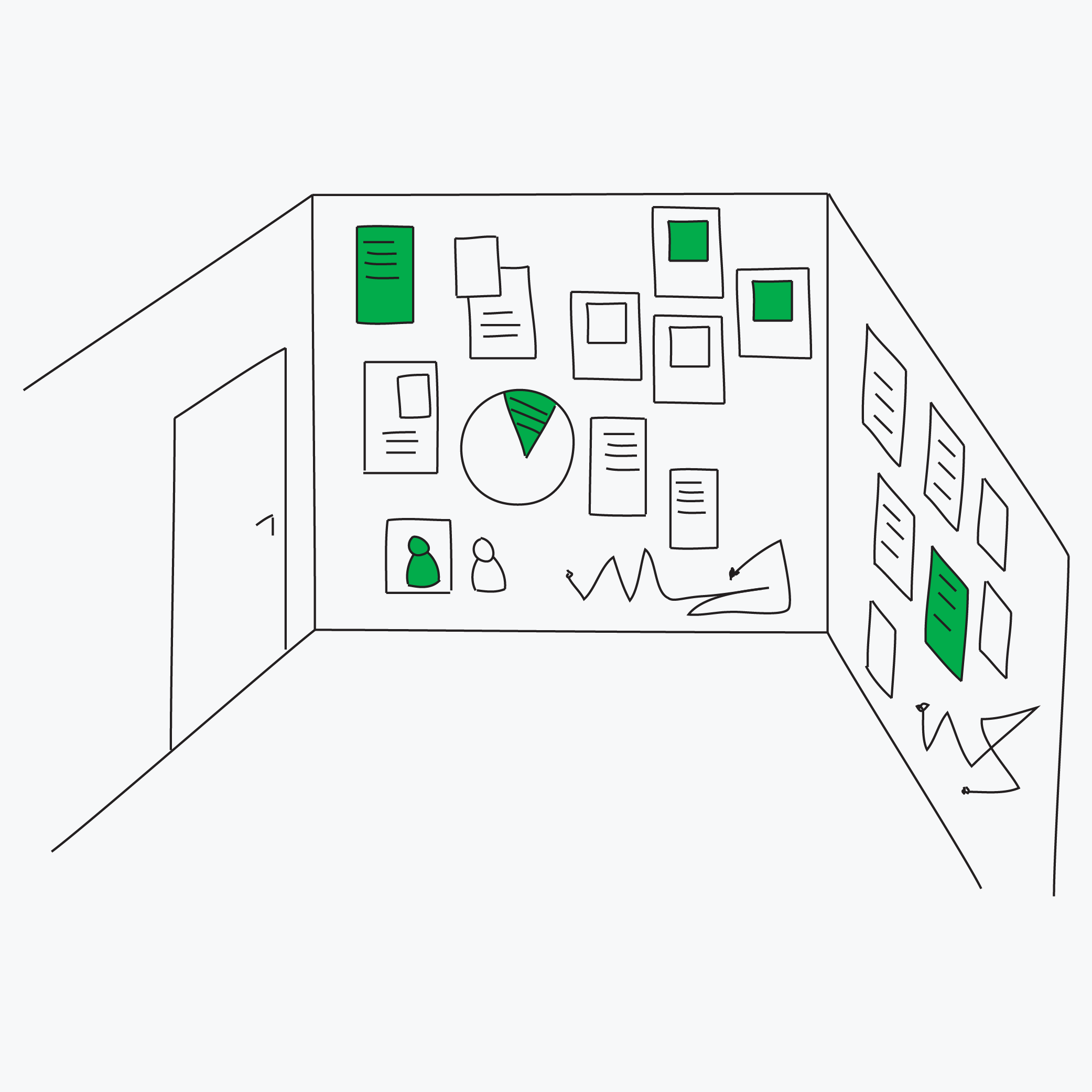Project War-room
Why?
The project war-room facilitates an environment where all resources, connected to a problem or a project, are brought into play. The aim is to clarify and discuss the development of the project in order to accomplish a successful execution: for example, challenges, conflicting interests between stakeholders, disagreements, pitfalls, milestones, timeline, budget, resources etc.
How?
The students could invite some of the stakeholders, connected to the project, to participate in a meeting in a project war room. Prior to the meeting, the students map the stakeholder in relation to the project. They also create various visual charts, displaying timelines, milestones, budgets, resource consumption etc. that they display in the project war-room. These materials constitute the foundation for analysis and discussing the forward-looking, strategic planning of the project. The walls in the room can each be divided into different themes, for example, the situation, the opportunities, the strategy etc.
Tips
For a successful facilitation of the method, the students need to consider the important things that they need to get right. Firstly, they need to discuss the outcome of the project. Secondly, they need to set an agenda in order to ensure the structure of the meeting and ensure that all topics are discussed. Finally, the students need to set out the rules of the meeting: for example, that interruptions are not allowed, or that all topics need to be visualized throughout the discussion (see Rules Maker). As an alternative the project war-room can also be used to generate new ideas.
Literature
Atkinson, R. (1999). Project management: cost, time and quality, two best guesses and a phenomenon, its time to accept other success criteria. International journal of project management, 17(6), 337-342.
Sibbet, D. (2013). Visual Leaders: New Tools for Visioning, Management, and Organization Change. John Wiley & Sons. New Jersey.

